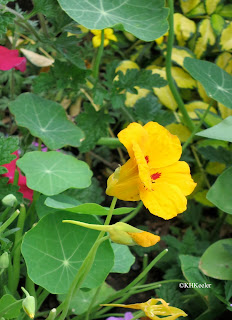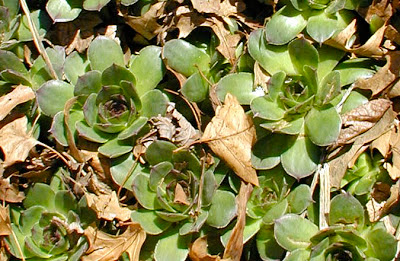 |
| watercress, Nasturtium officinale |
 |
| nasturtium, Tropaeolum majus |
If you have ever looked for nasturtium in the index of plant book, you will have wondered why nasturtium is the scientific name of watercress and the common name of Tropaeolum.
Watercress is a Eurasian plant in the mustard family, Brassicaceae, that has been eaten as a vegetable for centuries. The leaves have a sharp taste. The flowers are white but relatively small and not very conspicuous. It was definitely known to the Romans. Linnaeus named it Nasturtium officinale. It has been called Rorippa nasturtium but current opinion is that it is different enough from the rorippas to be kept separate. Nasturtium nasturtium-aquaticum is another name you will also see for watercress, but Nasturtium officinale has precedence and so is the correct name.
Nasturtium is a yellow or orange flowered plant, genus Tropaeolum majus (plant family Tropaeolaceae). Nasturtiums are native to the west coast of South America . “[I]t is used as a food in Peru today, as it has been for thousands of years” (Kipple & Ornelas p. 1821). Tropaeolum was introduced to Europe from the New World in the late 16th century. In the early herbals, for example Gerard, it is called Indian cress.
Nasturtium is not a common word. It seems odd that nasturtium is Tropaeolum and Nasturtium officinale is watercress.






